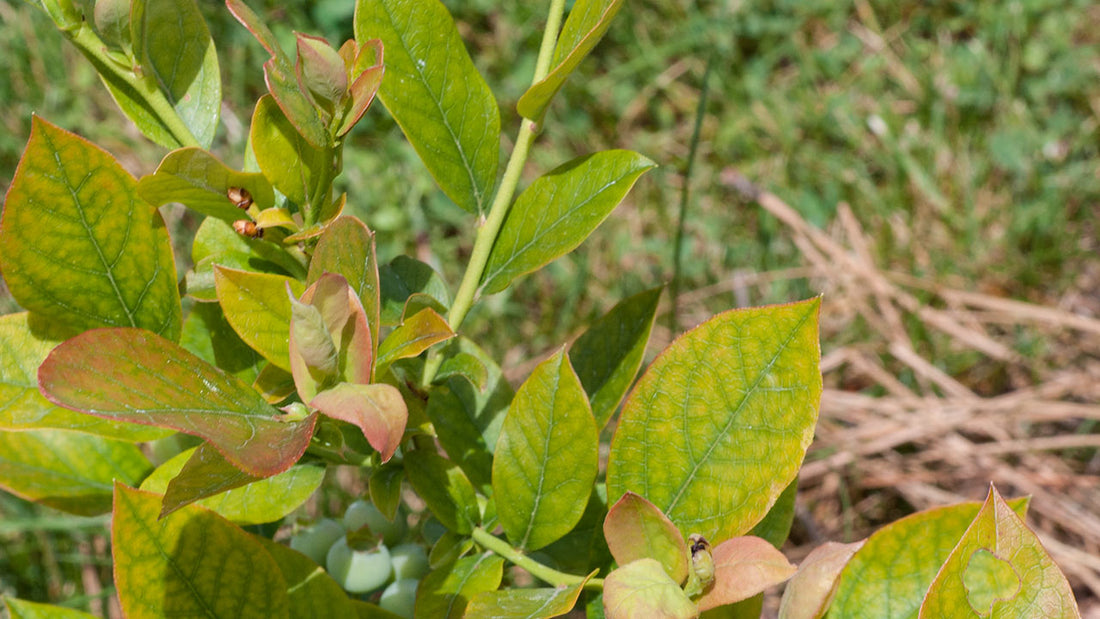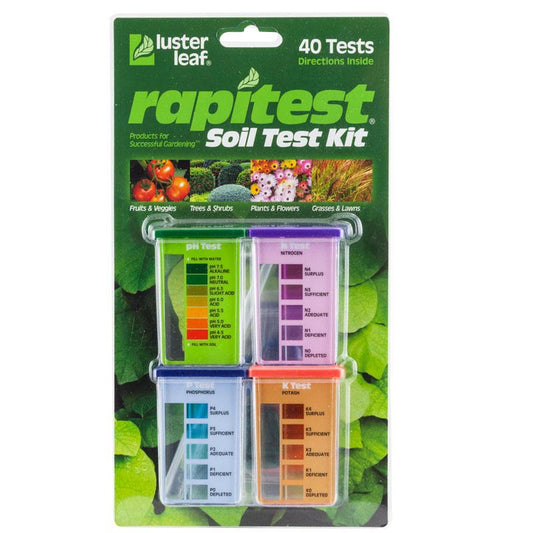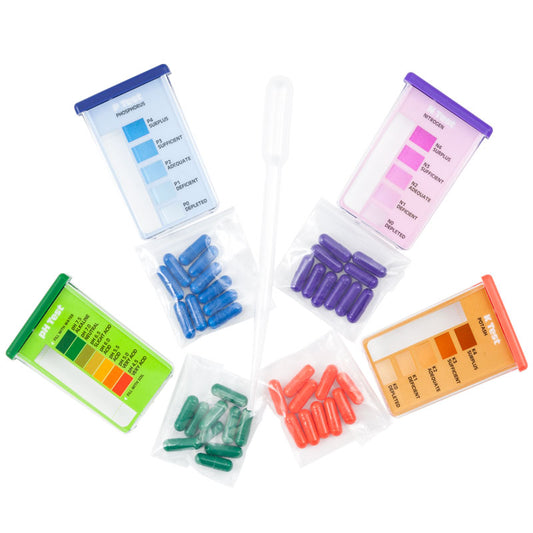What is causing those yellow leaves with dark green veins?
Blueberries are a wonderful fruit, tasty, healthy and the bushes make attractive landscape shrubs. They are easy to grow once you get the soil and water right, but if they have a problem they let you know! Some of my blueberries have begun to exhibit classic signs of iron chlorosis, that is iron deficiency. A blueberry with iron deficiency has yellowing leaves with dark green veins, the new growth will be affected by this first.
Iron deficiency in blueberry plants
Now, before you run off and bury iron nails next to your blueberry bushes one of the biggest culprits of this problem isn't that the soil doesn't have enough iron, but that the plants can't use the iron in the soil. Blueberries are unable to use the iron in soil when the soil pH is too high. Blueberries like their soil pH to be between 5.2 and 4.0 with the optimum being 4.5 to 4.8. Another problem that can cause iron chlorosis is too much water, this can happen with wet springs or irrigation that is set to water amounts that appropriate for the summer heat but not a cool spring.
How to test for iron deficiency in the soil
The first step to address this problem is to do a pH test. This simple, inexpensive pH test kit is perfect for this type of monitoring. You'll need to prepare a soil sample and the kit contains instructions, you can also watch a video of Tricia showing you how to prepare a soil sample. Once your sample is taken, dried, and crushed put a cap and a half full in in the test tube and 4ml of reagent, shake for 30 seconds and you're in business. 
This is the soil test for my Reka blueberry which seems to be the most unhappy of my five bushes. It looks like the pH is about a 5.0 which is ok for blueberries, looks like my problem might be a bit of a wet spring!

How to cure the blueberry plant
If your test comes out with a high pH you can add iron sulfate or elemental sulfur in the recommended amounts. Other helps to lower the pH is a pine needle mulch and the addition of peat moss. You can also fertilize your blueberries with an acidic fertilizer like Cottonseed Meal or Acid Mix. If your blueberries are going into containers, a mix of half potting soil and half Peat Moss works well.




20 comments
Teresa, sounds like you might have Septoria leaf spot. You can treat it with a fungicide labeled for Septoria. Do not overhead water your plants and increasing the spacing between plants will help with increasing air circulation.
Hi Just wondering if casaurina needles/leaves would have the same effect, I dont have any pine needles nearby
Iris, I am not sure. The most sure way to reduce the pH of your soil is to apply soil sulfur. But you should always test the pH of your soil before and after adding the sulfur and only add it according to the label.
Ed, first you need to check the pH of your soil as stated in the above article. If the pH is too high the iron in your soil is not available to your plants. Fix any pH issues (if you have any) then I would recommend an iron supplement like our Dr. Iron, https://www.groworganic.com/monterey-dr-iron-7-lb.html. You may also want to give them some fertilizer as well. You should see an improvement in your blueberries, soon.
Have 3 blueberry bushes. two of them are Chippewa that I planted 3 falls ago & the 3rd is a Bluecrop that I ordered bare root online last fall & planted. Even the one I planted last fall is leafing out with healthy green leaves as is one of the Chippewas. However, the other Chippewa has green veined yellow leaves. I had pine needles I raked out needles from under a white pine tree on my property for the past 3 years and placed around the bushes in a thick mulch as well as citrus rinds & other acidic compost. I also have many old rusty nails that I threw in for good measure pulled from boards & pallets I re-purposed for fences, chicken coop, raised gardens, potato towers, etc., so the ground should be acidic enough w/ plenty of iron to utilize.
However, in North Central Ohio, we did have a cold, wet spring (was more like winter) into early May with torrential downpours continuing on through the end of May (killed some oak seedlings in a low lying part of my property that got flooded so I have to replant water loving trees there). How do you fix an iron deficiency in blueberries caused by a cold wet spring? Any suggestions?